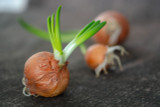Coconut Coir: What It Is & How To Use It For Gardening
With more time spent at home over the past couple of years, many of us have found comfort in gardening or taking care of indoor plants. The health advantages of gardening are plentiful, enabling us to escape from the stresses of daily life while relaxing in the privacy of our own homes. Home gardening can be made even better with the use of coconut coir, which provides a healthy boost to your flower and vegetable seeds.
What is Coconut Coir?
Coconut coir is a growth medium made from coconut husks. The world has since come to realize the endless opportunities that these husks provide, which were formerly seen as a waste product.
This organic substance is a good supplement to garden soil and improves the drainage, water retention, and absorbency of potting soil.
Coir can be used alone to propagate plants, sprout seeds, and support the root systems of hydroponically grown plants.
After being processed, coconut coir may be used for three different horticultural purposes: coco fiber, coco peat (or pith), and coco chips. These applications are primarily distinguished by their size and texture.
How can Coconut Coir be Used in My Garden?
All forms of coconut coir are fantastic alternatives to peat-based composts. It may be used on a wide range of horticulture items both indoors and outdoors. Coco coir is often a better choice for indoor gardeners compared to conventional composts and soils because it offers increased aeration and water retention.
Here are the steps to take when using a coconut pellet seed starting system.
Expand the Pallets
The flat, dry coir pallets used for seedling germination have to first be soaked in water. Put the pellets in a tray that is waterproof. Ensure that the small, imprinted hole is facing upward. Wait for the discs to expand as you add warm water to them.
Plant the Seed
Place two seeds inside each pellet when it has fully expanded. By squeezing or compacting the pellet, the planting depth can be adjusted. Remember to label the tray so that seedlings can be identified. To keep moisture in, use plastic wrap or a transparent plastic cover.
Ensure Sufficient Sunlight
Put the trays beside a window or beneath grow lights for optimal growth. When the seeds develop, keep the pellets consistently moist.
It normally works just fine to add a little water to the tray's bottom once per day.
Germination
When the cotyledons have opened and the seeds have germinated, it is better to take off the plastic cover. To keep the pellets equally moist, continue watering once daily.
Provide Nutrients
Usually, the roots have already penetrated the netting by the time the seedlings have their second or third set of true leaves. The best course of action for tall, healthy transplants is to either fertilize or plant the seedlings, pellets and all, in a tiny pot.
Transplant seedlings
Harden off the seedlings when they are ready for transplant. You may plant coir pellets straight into your garden.
Obtain Coconut Coir Pellets for Your Gardening Needs
Compared to peat-based composts, coconut coir is more durable in soil, has a higher natural resistance to bacteria and fungi, and is better for the environment. It may also be kept in storage for several months without breaking down, which is perfect for seasonal growth!
Here at Freedom Farms, we offer high-quality coconut coir pallets to add to your gardening kit. It’s time to give this hydroponic growth medium a go!
Recent Posts
-
The Secrets To Growing Radishes In Containers
Container gardening is a popular way to grow vegetables like radishes. Growing radishes in container …26th Jun 2023 -
How To Successfully Grow Onions From Seeds
Many recipes use onions to give a strong taste and smell. Growing onions from seeds is better than b …26th Jun 2023 -
How To Grow Radishes At Home: A Step-By-Step Guide
Growing your radishes at home can be a rewarding and delicious endeavor. These crispy and spicy vegg …26th Jun 2023





